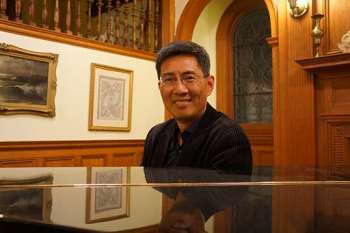The Robert H. N. Ho Family Foundation Lecture Series on Chinese Buddhism, at The School of Oriental and African Studies (SOAS) in London, will commence in October with a lecture and seminar by Prof. Eugene Y. Wang.
Prof. Wang is the Abby Aldrich Rockefeller Professor of Asian Art at Harvard University. In addition to being a recipient of the Guggenheim Fellowship and other awards, he is the art history editor of the Encyclopedia of Buddhism (Macmillian, 2004). He received the Japanese Academic Achievement Award in 2006 for his book, Shaping the Lotus Sutra: Buddhist Visual Culture in Medieval China (2005). His extensive publications cover all periods and aspects of Chinese art. His current research interests include the exploration of the artful mind and its materialization.
NEWS
SOAS Launches The Robert H. N. Ho Family Foundation Lecture Series on Chinese Buddhism with Lecture and Seminar by Eugene Wang
 From thesource.com
From thesource.comProf. Wang has served on the editorial board of the Art Bulletin, and the advisory board of Center for Advanced Study in Visual Arts, National Gallery of Art, Washington, DC. Currently, he is laying the foundation of the Harvard CAM (Chinese Art Media) Lab, which will be devoted to the design of multimedia experiences of Buddhist culture. The lab’s pilot projects include “Mind in Caves,” a series of multimedia exhibitions and films on Buddhist cave programs as virtual theaters, and a film essay on the rise of “abstract painting” in Asia, in the 1960s.
Lecture by Prof. Eugene Wang—How to Experience Buddhist Caves as Virtual Reality?
Date: Friday, 6 October
Time: 17:30–19:00
Venue: Brunei Gallery Lecture Theatre
Address: Brunei Gallery, SOAS, Thornhaugh Street, Russell Square, London WC1H 0XG
Seminar by Prof. Eugene Wang—The Heavenly Eye in Caves
Date: Saturday, 7 October
Time: 09:00–13:00
Venue: Room 4426 (Russell Square: College Buildings)
Abstract
Plato’s Cave has often been claimed as the progenitor of the film medium. It has also been reclaimed for much of the projection technology such as automated virtual environment. While the claims are conceptually fitting, they come short of historically substantiating what happened in between Plato’s time and ours. The alignment is long on the analogy between the projected shadows on the wall and the projection apparatus, but short, historically, on making much out of the cave setting. Along the same line of thinking, one could profitably claim Buddhist caves as the forerunner of virtual reality technology. What makes this new alignment worth pondering is that it makes good on the cave claim in earnest.
Around 400 CE, the lore of a proverbial “Shadow Cave” was spreading in Asia, leading to the creation of such a cave in China around 420. While the historical site no longer exists, cave shrines inspired by the “Shadow Cave” have survived to this day. Moreover, murals inside such caves testify to the endurance and spread of the “Shadow Cave” idea. Not that the 5th century caves constitute an origin of the visual technology of the virtual reality environment we have today; rather, such an alignment says much about visual technology both in its early aspiration and its present-day practice. Early mural caves aspired toward the condition of a virtual world. It just didn’t quite have the apparatus. Our present-day virtual environment technology fulfills that aspiration, and in doing so, it delivers an experience that is not necessarily modern. In light of this, caves are as not so old as we think, and our virtual reality technology not so new. Professor Wang’s lecture shows why and how.














